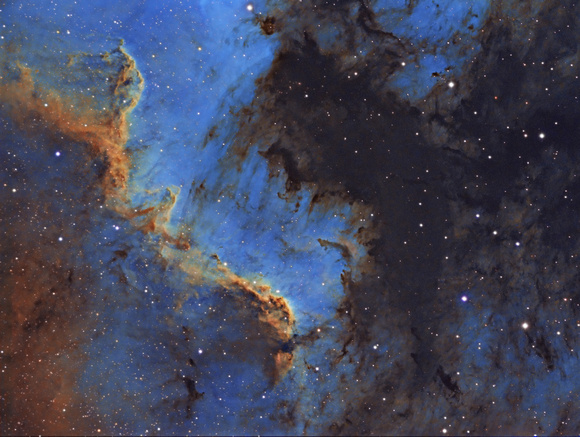APM/TMB 130/780
QSI 583WSG
Astrodon 5nm Ha, 5nm OIII, 5nm SII
Ha, OIII, SII 8x15min each (1x1)
Imager Temp -10CField Flattener
Cropped Slightly for Framing
Link to Larger JPEGLink to Ha Component ImageSky and Telescope Online Gallery August 31, 2010What strikes me about this image is that the structure of NGC 7000 is almost unrecognizeable due to the color mapped nature of the data. Wavelengths were assigned in the traditional Hubble Pallette with Ha to green, OIII to blue, and SII to red. Then, because the Hubble Palette can be overly green, especially in Ha rich regions, the colors were adjusted to make the colorful and interesting format displayed here.
Just as prominent in this image as emission nebula NGC 7000, perhaps even more so, is dark nebula LDN 935 (
Lynd's Dark Nebula) - the dust that obscures the emission nebula to form the 'Gulf of Mexico' and dominates the entire right half of the image.
The "Cygnus Wall" is a powerful ionization front where UV radiation from young, very hot stars is bombarding the cold dust at the leading edge of NGC 7000 and exciting it into emitting Ha and particularly SII light that is then picked up on the camera's sensor. This is represented by the complex filamentous structure rolling towards the dark gulf.
Data Gathered 8-28-10, Processed 8-29-10


